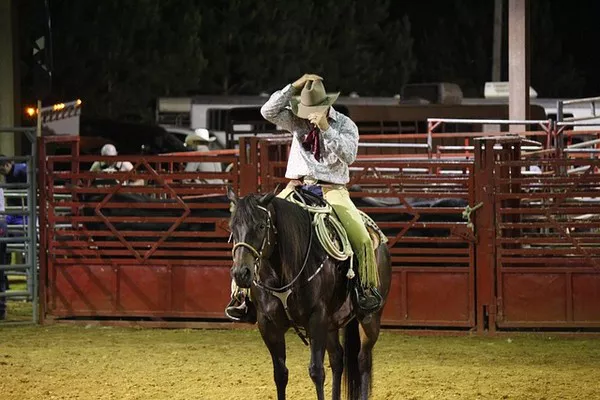The Calgary Stampede stands as one of Canada’s most iconic and celebrated events, drawing visitors from around the globe to experience its unique blend of rodeo, exhibitions, entertainment, and cultural festivities. This article delves into the inner workings of the Calgary Stampede, exploring its history, organization, key events, economic impact, and cultural significance.
Introduction to the Calgary Stampede
Historical Roots
The Calgary Stampede traces its origins back to the late 19th century when the Canadian Pacific Railway (CPR) helped shape Calgary into a bustling hub of agriculture and commerce. In 1886, the Calgary and District Agricultural Society hosted the city’s first exhibition, laying the foundation for what would eventually become the Calgary Stampede.
Evolution and Expansion
The Stampede’s modern iteration began in 1912, initially conceived as a rodeo and agricultural fair to promote the region’s ranching heritage. Over the decades, it has evolved into a 10-day extravaganza that showcases not only traditional rodeo events but also concerts, parades, midway rides, culinary delights, and cultural exhibitions.
Organization and Structure
Governance and Leadership
The Calgary Stampede is governed by the Calgary Stampede Board, a volunteer-driven organization comprising community leaders, business professionals, and representatives from diverse sectors. The Board oversees strategic planning, financial management, and the overall direction of the event.
Operational Structure
The Stampede’s operations are divided into several key areas:
- Programming and Events: Planning and coordination of rodeo competitions, concerts, agricultural showcases, and cultural exhibitions.
- Marketing and Promotion: Public relations, advertising campaigns, and media relations to attract visitors and participants.
- Logistics and Infrastructure: Management of venues, facilities, and logistical support for exhibitors, performers, and attendees.
- Community Engagement: Collaboration with local communities, Indigenous groups, and stakeholders to ensure inclusivity and cultural representation.
Volunteerism
Volunteers play a pivotal role in the Calgary Stampede’s success, contributing thousands of hours annually to various roles such as event coordination, hospitality, guest services, and safety. Their dedication and enthusiasm are integral to maintaining the Stampede’s vibrant atmosphere and smooth operation.
Key Components of the Calgary Stampede
Rodeo and Chuckwagon Races
Rodeo Events
The Calgary Stampede Rodeo is one of the world’s premier rodeo competitions, attracting top athletes in bull riding, barrel racing, saddle bronc riding, and more. Participants vie for coveted titles and substantial prize purses, showcasing their skills and athleticism amidst a backdrop of enthusiastic crowds.
Chuckwagon Races
Chuckwagon racing is another highlight of the Stampede, featuring high-speed competitions where teams of horses pull chuckwagons around a track. The adrenaline-pumping races, complete with daring maneuvers and skilled horsemanship, are a favorite among spectators and participants alike.
Grandstand Show and Evening Entertainment
The Grandstand Show is a nightly spectacle that combines music, dance, elaborate costumes, and multimedia effects to dazzle audiences. Featuring local talent and renowned performers, the show celebrates Western heritage while entertaining crowds with its dynamic performances and vibrant energy.
Midway and Exhibitions
The Stampede Midway is a bustling carnival of rides, games, and attractions that appeal to visitors of all ages. From classic Ferris wheels to thrilling roller coasters, the Midway offers a myriad of experiences, complemented by food stalls offering everything from traditional fair fare to gourmet delights.
Agricultural Exhibitions
Agricultural showcases at the Stampede highlight Alberta’s rich farming heritage and innovative agricultural practices. Livestock competitions, agricultural displays, and interactive exhibits educate visitors about agriculture’s vital role in the region’s economy and culture.
Indigenous Showcase
The Calgary Stampede honors and celebrates Indigenous culture through various showcases and events. Indigenous Peoples’ Heritage Village features demonstrations, performances, and displays that highlight Indigenous traditions, arts, crafts, and culinary delights.
Economic Impact and Tourism
Economic Contribution
The Calgary Stampede is a significant economic driver for Calgary and the surrounding region. It generates millions of dollars in economic activity annually through tourism, hospitality, retail sales, and infrastructure development. Hotels, restaurants, and local businesses benefit from increased patronage during the Stampede’s 10-day run.
Tourism and Global Appeal
The Stampede’s global appeal attracts visitors from across Canada, the United States, and around the world. Tourists come to experience the unique blend of Western hospitality, entertainment, and cultural immersion that the Stampede offers, contributing to Calgary’s reputation as a premier destination for cultural tourism.
Cultural Significance and Community Engagement
Cultural Heritage
The Calgary Stampede plays a vital role in preserving and promoting Western heritage and cowboy culture. It serves as a platform for showcasing Alberta’s ranching traditions, horsemanship skills, and the spirit of camaraderie that defines Western communities.
Community Collaboration
The Stampede fosters partnerships with local communities, businesses, and organizations to create a memorable and inclusive event. Collaborations with Indigenous groups, cultural societies, and community initiatives enhance the Stampede’s diversity and ensure representation of diverse perspectives and traditions.
Environmental Sustainability and Legacy
Sustainable Practices
In recent years, the Calgary Stampede has prioritized environmental sustainability and responsible stewardship of natural resources. Initiatives include waste reduction programs, energy-efficient practices, and eco-friendly event management strategies to minimize the Stampede’s ecological footprint.
Legacy and Future Directions
As a cultural institution with deep roots in Alberta’s history, the Calgary Stampede continues to evolve while honoring its legacy. Future plans may include expanding cultural programming, enhancing visitor experiences, and embracing technological innovations to maintain the Stampede’s relevance and appeal in a changing world.
See also: Why the Québec Winter Carnival is Important
Conclusion
The Calgary Stampede stands as a testament to Alberta’s pioneering spirit, Western heritage, and community pride. From its humble beginnings as a local agricultural fair to its current status as a global cultural phenomenon, the Stampede embodies the essence of Western hospitality, entertainment, and community spirit.
Through its diverse programming, volunteer-driven ethos, and economic impact, the Stampede enriches Calgary’s cultural landscape while attracting visitors from far and wide. Whether attending the exhilarating rodeo events, savoring Midway delights, or experiencing Indigenous showcases, visitors are immersed in a celebration of Alberta’s rich heritage and the enduring legacy of the Calgary Stampede.

